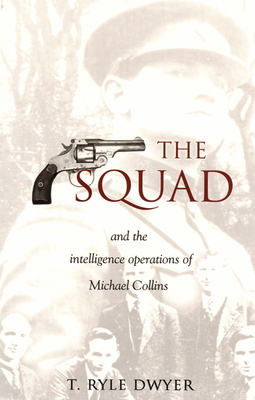The Squad and the Intelligence Operations of Michael Collins
Ian McKeane reviews The Squad and the Intelligence Operations of Michael Collins, by T. Ryle Dwyer, Mercier Press, ISBN 1 8563 5469 5, €12.95/£10.95

NEARLY NINE decades since the events which led to the establishment of the Irish Free state and the Province of Northern Ireland it would seem that little remained amongst the archives that had not been already inspected. Yet T Ryle Dwyer has used the recently released Bureau of Military History (BMH) material held in the Irish National Archives as the basis for this book. His bibliography also includes the papers of the main players held in various libraries and an excellent array of secondary sources.
The author traces the development in 1919-20 of Michael Collins' intelligence network and the Dublin-based guerrilla fighters who became known as 'the squad'. He then describes in detail many of their operations.
Their reminiscences in later life gathered by the BMH provide the basis for much of the text. Not surprisingly, they reinforce the view that Collins' drive and organisational skill when supported by the personal loyalty of his male (and female) colleagues produced an unbeatable guerrilla force.
Dwyer does point out in his introduction that the British failed to wage all out war on the IRA despite the excesses of the Auxiliary Police and the Black and Tans. What he could usefully have remarked on was the lack of British commitment to a full blooded intelligence organisation in Ireland at the end of the Great War. This would not belittle Collins' network but rather question the ability (not for the last time) of British Intelligence.
One can suppose that Dwyer is aware of this line of research since he includes the relevant Narratives book in his bibliography. In fact as one reads the book it seems that Dwyer is at his best when presenting the story based on the interviews carried out by the BMH and less convincing when using other sources. One even gets the feeling that versions of some of the work can be found elsewhere in Dwyer's work.
What is clear from the narrative is that Collins' Dublin IRA squad effectively took the war to the enemy. While not able to force a British withdrawal, they helped to provoke a British reaction whose brutality and inaccurate targeting of suspects lost the public relations battle and eventually enabled negotiations to take place.
By 1921 informed opinion in America, France and in Britain itself was bearing down on Westminster to achieve some sort of accommodation with Sinn Féin. The squad was an essential tool in this public relations victory.
This book does add to the body of work on the IRA struggle during the Anglo-Irish war. In particular, the chapter dealing with the attack on the Dublin Custom House is fascinating. Yet, the lack of references or notes is irritating and the complete absence of any reference whatsoever to future Taoiseach Sean Lemass, who is generally accepted as having been one of the Collins' Squad, is very odd indeed.
(see also www.irishdemocrat.co.uk/letters-views/ 'Author queries Lemass role in The Squad')
Connolly Association, c/o RMT, Unity House, 39 Chalton Street, London, NW1 1JD
Copyright © 2005 Ian McKeane

